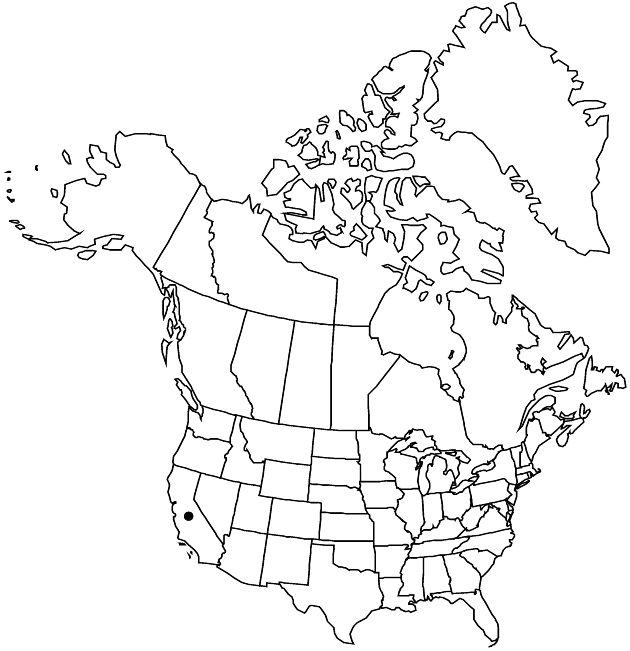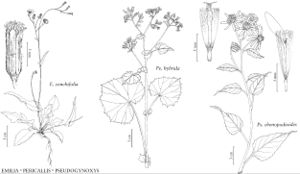Pericallis hybrida
Opera Bot. 44: 21. 1978.
Short-lived perennials or facultative annuals, 20–80 cm. Leaves: petioles ± lengths of blades, often with expanded and clasping bases; blades 6–12 × 6–12 cm, margins wavy to dentate (distal leaves smaller, bractlike). Phyllaries 4–6 mm. Ray-florets: corollas white or bicolored, proximal 1/3–2/3 of laminae white, the rest purplish to reddish, pinkish, or bluish. Disc corollas 2.5–3.5 mm. Cypselae glabrous or puberulent between ridges; ray cypselae slightly larger and lighter colored than the brown to black disc cypselae (pappi of ray-florets 0 or 2 subulate or setiform scales). 2n = 60.
Phenology: Flowering spring (fall).
Habitat: Disturbed sites
Elevation: 10–100 m
Distribution

Introduced; Calif., Atlantic Islands (Canary Islands)
Discussion
Pericallis hybrida has escaped from cultivation and is established in the cool, damp climate of the San Francisco Bay region. It is a complex of true-breeding cultivars derived from wild progenitors native to the Canary Islands (T. M. Barkley 1966); it is not a naturally occurring species. The cultivars are widely grown in glass houses and are sold as cool-season pot-plants in the horticultural trade.
The name Senecio cruentus (L’Heretier) de Candolle has been widely misapplied to Pericallis hybrida in the horticultural trade.
Selected References
None.
